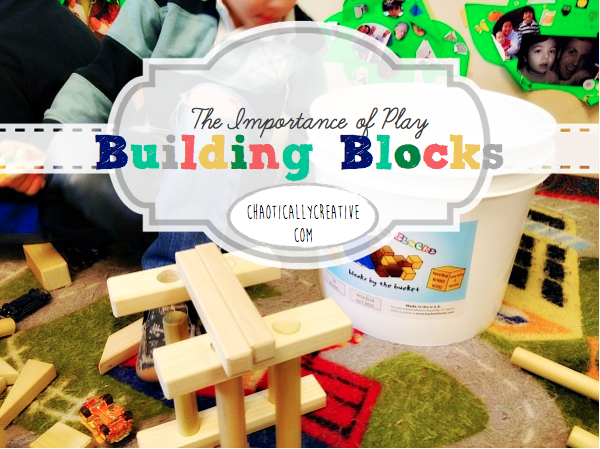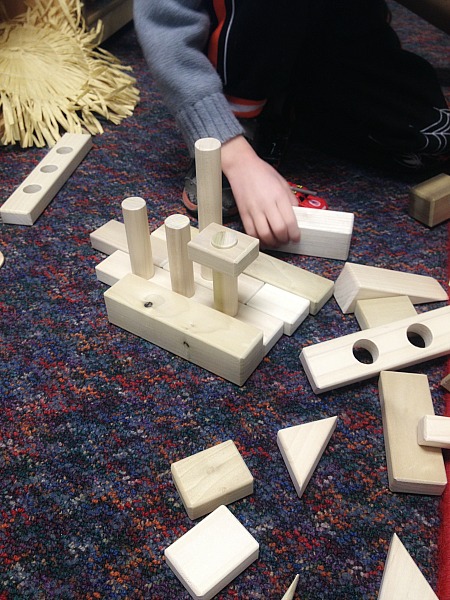Disclaimer: This post is sponsored by Back to Blocks . All opinions are 100% mine. In exchange for this post Back to Blocks donated a bucket of blocks to the Non-Profit childcare center of my choice. For the confidentiality of the children I choose not to use full face pictures or names.
Many of you know that my education and experience is in early childhood development. We’ve talked about how to select a childcare, what types of toys are great for toddlers and preschoolers, the importance of labeling in your home and organizing toys.
Everything I know about how young children learn, helps me in my endless adventure of finding the key to “calm” in my home. Let’s look just 3 little things that we know about children…
We Know….
- Children learn from their interactions with materials and their environment.
- Children learn through play with age appropriate materials.
- Children thrive in an environment that features organization, consistency and structure.
Today I want to focus on the importance of play featuring the beautiful wood blocks by Back to Blocks . (Many thanks to Back to Blocks for donating a large bucket of blocks to our local non-profit pre-school) 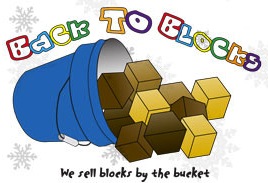
Back to Blocks makes safe, affordable, durable and natural wooden blocks. All blocks are die, paint and stain free. Handmade in the USA these blocks are top notch, but don’t just listen to me take a look and read what the kids thought.
At First United Methodist Preschool in Murfreesboro, TN the classrooms follow the Creative Curriculum approach. This method of learning is based on the choices of the children as they move through their learning environment. Teachers facilitate learning through play by taking teachable moments and using them as learning experiences with the children. With little structured learning time, do these children actually learn? Let’s take a look.
Three boys were in the block center when I came in with the bucket of blocks. They were super excited and couldn’t wait to see what I had in the bucket. We picked up the toys they were playing with and dumped the blocks on the floor. With in seconds the boys separately and together got to work on their structures.
I asked “what do you think about these blocks? Are they different from the blocks you have in your class? They responded with all sorts of observations…
“These blocks are smaller than our blocks”
“They are smoother”
“Look these blocks have holes in them… we don’t have any blocks with holes.”

As the boys were building I asked,
“What is your favorite block?” Each boy picked up a diamond shape block and they shouted “the diamond, the diamond block!”
Then they proceeded to show me how they could put the sides of the blocks together.
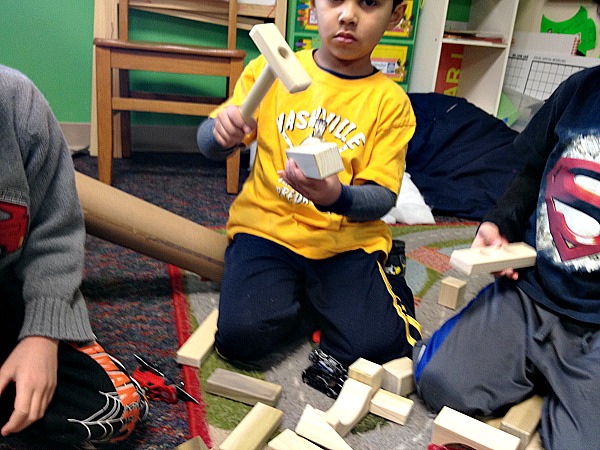
Almost instantly one of the little guys made a hammer using a long block and the block with the hole in it.
“Look guys, a hammer!” he said.
I ask, “What do you use a hammer for?”
“For building things.” he explains.
“What will you build?” I ask
“A big garage for all of these cars!” he replies
Looking back to the other boy I noticed with in seconds he built this structure above.
“It’s a bridge!” he exclaims! “It’s really sturdy and won’t fall down!”
“Why won’t it fall down? I ask.
“Because with these blocks you can stick them into the holes and then they don’t just fall over.” he explained in detail.
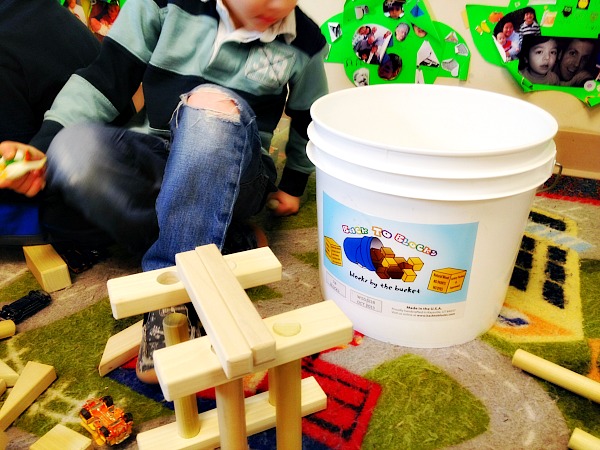 What do children learn when playing with blocks? The National Association for the Education of Young Children breaks this very subject down in to each area of development. Here is a brief overview…
What do children learn when playing with blocks? The National Association for the Education of Young Children breaks this very subject down in to each area of development. Here is a brief overview…
When Children Play with blocks they develop:
Physically
- Through motor development while lifting, moving and constructing
- Hand eye coordination when placing blocks on top of one another for balance
Cognitively:
- Children learn math skills in relationship to volume, height, weight.
- Vocabulary words about spatial relationships (under, over, through etc.)
- Shape related words (diamond, square, cube etc.)
Social and emotional
- Children use team work when building large structures
- Children will communicate plans in order to construct products together
- Children feel a sense of accomplishment when building structures that work (a bridge that cars can drive across etc)
Language and Literacy
- When given the opportunity children can record or have an adult record stories related to the items which they have built.
- Teachers can use
